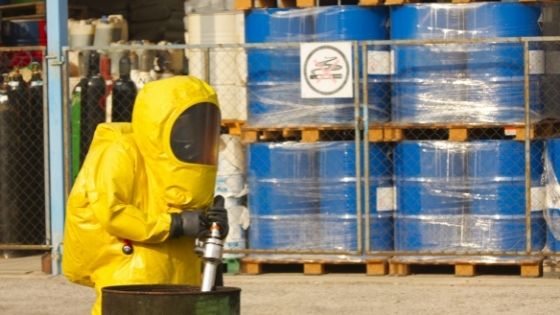Did you know there were 21,286 recorded incidents involving hazardous materials in 2020?
This is a shocking statistic because, through proper storage and handling, the vast majority of health and safety breaches are preventable. When it comes to dealing with hazardous materials, a methodical approach can save lives.


Whether you are a small business owner or an industrial chemical storage operation, you need to make sure you’re up to code. Our guide outlines your responsibilities.
Read on to learn more about storing hazardous materials.
Clear Labeling and Storage
One of the foundations of safe chemical storage is clear labeling. It is of utmost importance that all stored chemicals can be easily identified, especially in an emergency.
Storage areas must also be appropriately marked to indicate they contain hazardous materials. Hazardous chemical containers should also be stored at a convenient height for handling.
Not every employee needs access to the chemical storage area. By decreasing the amount of authorized personnel, you can cut the risk of mishandling or labeling.
Material Compatibility
It is important to remember that not all chemicals can be stored together. Some different compounds may react to each other and cause an accident.
Even if you think your containers are secure, the smallest leak or spill could cause a chemical accident. Here are a few examples of chemicals that must not be stored together:
- Nitric acid and alcohol
- Oxidizing agents and organic materials
- Chlorine or iodine and ammonia
- Zinc and sulfur
- Mercury and Acetylene
This list is far from exhaustive. You should consult the datasheet provided with each chemical product prior to storage.
Containment Systems
It is your legal responsibility to have an effective containment system in place when storing hazardous materials. OSHA regulations state that you must have provisions to contain 10% of your total volume stored.
Containment systems must consist of an inert material that will not react with the stored chemicals in the event of a spillage or breach. Even cleaning cupboards should be equipped to deal with the risks of toxic cleaning products.
Flammable Materials and Explosives
Take extra care when handling and storing materials with explosive or flammable properties. Flammable hazardous materials should be kept sealed at all times and stored away from any potential sources of ignition.
A chemical explosion is one of the most serious breaches a chemical storage facility can experience. Make sure the areas where you store volatile hazardous liquids are well ventilated to prevent the build-up of flammable gasses.
Storing Hazardous Materials – What to Know
So, that’s a round-up on how to store hazardous materials safely. By following these procedures, you can prevent accidents and potentially save lives.
Are you up to code? Check your business today and rest easy in the knowledge that your workplace is safe.
Did you find this article helpful? If so, be sure to check out the rest of the blog for everything you need to know about business, technology, education, and more.
















